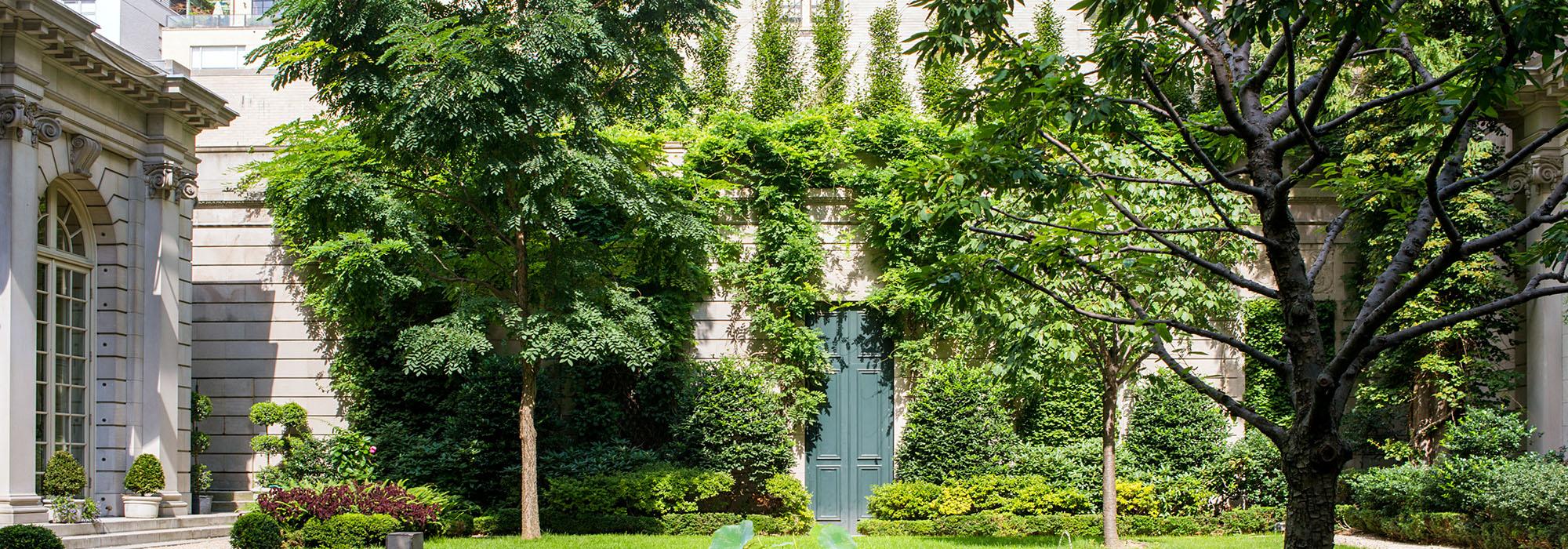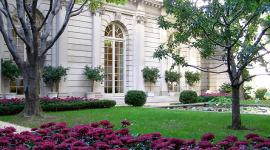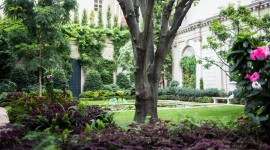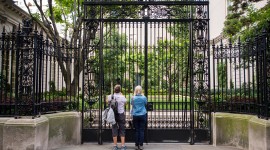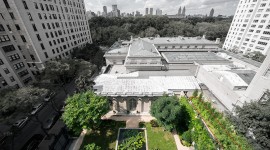A Framework for Moving Forward at the Frick
Over the past few weeks, The Cultural Landscape Foundation (TCLF) has been inundated with e-mails and telephone calls about the future of Russell Page’s viewing garden at the Frick Collection because the museum, located on the Upper East Side in New York City, is now planning an expansion. As the national organization that led the charge against the ill-fated 2014 expansion plan that called for the demolition of the Page garden, TCLF has waited to learn more before weighing in publicly on the new proposal from Annabelle Selldorf, the consulting architect. On Tuesday, May 15, Ms. Selldorf was kind enough to facilitate a “Go-To” meeting to give some sense of what she is proposing for the Frick expansion. Ms. Selldorf is known for her thoughtful, elegant, and informed approach to design, and that was evident throughout the conversation about the Frick expansion. The challenge for Selldorf and her client (and for the architecture critics, who are already tweeting) is to apply the same standards to the Frick’s significant work of landscape architecture as are applied to its building. As the New York Times architecture critic Michael Kimmelman wrote of the Frick’s prior attempt to expand, “Great public places and works of landscape architecture deserve to be treated like great buildings.”
The Russell Page-designed viewing garden on East 70th Street—a gem measuring only 54’ by 76’—is a rare public commission undertaken by the influential twentieth-century British landscape architect and is his only design in New York City. Thanks to the Frick and its horticulturist, Galen Lee, who worked with Page, the garden possesses a high degree of design integrity. Consequently, Page’s contribution to the Frick is a potential National Historic Landmark (NHL) candidate with “significance in landscape architecture.” To provide some context for the importance of such a designation, there are some 2,800 NHLs in the United States, but fewer than 70 are designated for significance in landscape architecture. Properly recognizing the importance of the Page garden would require updating the 2008 National Historic Landmark nomination titled “The Frick Collection and Frick Art Reference Library Building.” Presently, the significant dates associated with the 2008 NHL designation of the Frick are listed only as 1914, 1919 and 1935, thus ignoring the garden. In fact, the only reference to the garden in the 2008 nomination appears on page 7, stating “The expansion also included a garden designed by Russell Page (1906-1985).”
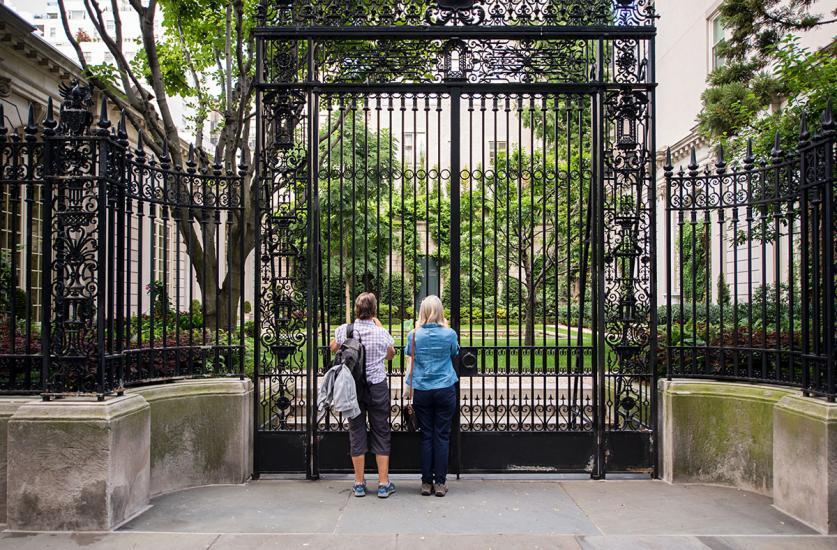
Expanding the period of significance for the Frick to include the viewing garden is important and challenging in equal measure because Page’s original plan is not the end of the story. He remained involved with the project for several years, fine-tuning the design when, for example, plant materials failed. As noted above, Galen Lee worked with Page and has tremendous knowledge about Page’s plans and design intent. This raises the questions: When does the garden’s period of significance end, and what does it include? Stewards at the Frick need to be certain about what does and does not constitute a “contributing feature” before they decide how to proceed with the expansion.
Along the garden’s northern perimeter is a planting box and trees whose composition creates the illusion of depth and a green space farther in the distance—an inventive, living trompe I’oeil that Page used to expand the dimensions of the constricted plot he was given to practice his art. These elements comprise a significant feature of the garden’s original design. We know that because the 1977 press release issued by the museum when the garden opened noted that “A staggering row of Bradford pear trees and shrubs has been set in an elevated planting box installed behind the garden’s north wall in order to screen the rear wall of the Frick Art Reference Library, which rises above 71st Street.” Page himself also wrote about the composition in a 1978 essay in House & Garden titled “The Shaping of a Garden,” noting the following: “…a flat formal pattern would produce a sunbaked room furnished solely with a carpet, when what was intended was to distract attention from the high buildings to the north. So first I set a planter 60 feet long; 5 feet wide, and 4 ½ feet deep, on steel framework behind the top of the north wall.”
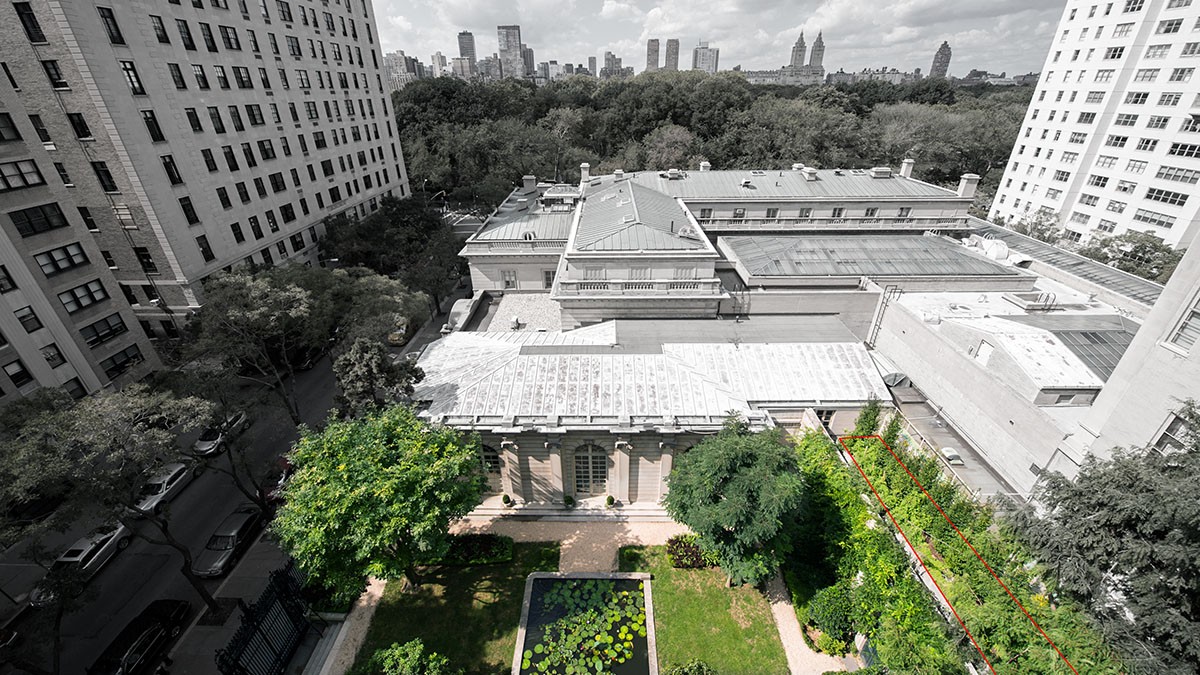
It is only when the Frick determines the period of significance for the overall property and what existed during that period that educated decisions about its design and management can be made.
To further illustrate this challenge, it is instructive to consider another Gilded Age property, the Biltmore Estate in Asheville, North Carolina, which was designated a National Historic Landmark in 1963. The original designation of the estate did not include its significance in landscape architecture. But in 2005, the Biltmore’s NHL listing was updated to recognize new areas of significance, including landscape architecture, as well as the contributions of the estate’s master gardener, Chauncey Beadle, who was selected by Olmsted to fill the position in 1890 and who did not retire from Biltmore until his death in 1950. As a result, the Biltmore Estate today has a period of significance that spans from 1888 to 1950.
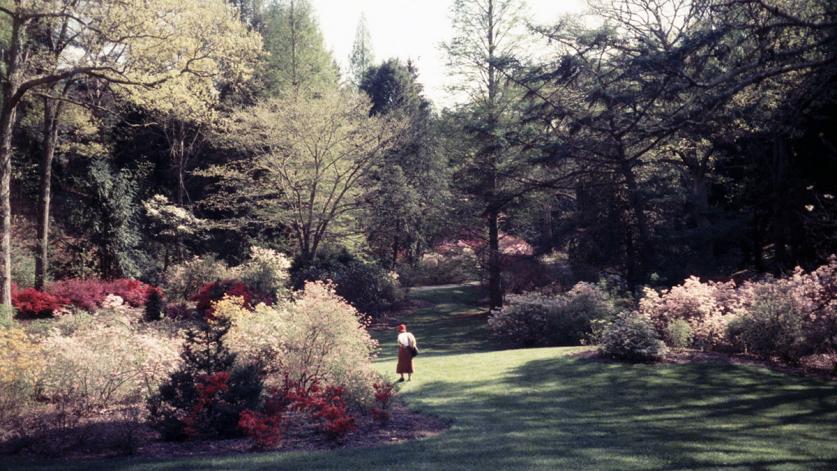
As one considers the prospect of establishing a period of significance for the Frick’s Page garden, it is important to note that although the New York City Landmarks Preservation Commission (LPC) does not review planting plans (a topic for future debate), it often evaluates and establishes the period of significance for works of architecture. Given that the research procedures and analytical methodology for establishing a period of significance and prescribing an appropriate treatment (e.g. preservation or restoration) are universally codified, why then not for landscape architecture? Even if members of the LPC staff lack expertise in landscape architecture and horticulture, surely they are adequately experienced in applying criteria for establishing the period of significance for historic properties (the fact that the title of the Secretary of the Interior’s Standards was changed in 1992 from standards for Historic Buildings to standards for Historic Properties is telling in this regard).
It is also important to recognize that the Frick is not Madison Green or Union Square, where there is ample room to absorb small alterations to the landscape. The Page garden is, of necessity, a restrained masterwork of landscape architecture. Like the diminutive and restrained Paley Park, with its limited palette of living and non-living materials, changes to the material composition of the garden must be carefully analyzed and contextualized because, given the garden’s small scale, they could prove to be seismic.
As became evident just a few years ago, the Page garden is not only beloved by New Yorkers who visit the museum, but also by many groups and organizations that care about the city’s unique and unrivaled heritage. TCLF remains cautiously optimistic that, along with Ms. Selldorf’s sensitive and surgical approach to the building’s architecture, an equally sensitive approach will be taken with the Page garden, one that recognizes its rightful place in an expanded period of significance covering the entire Frick property. To embark on the current plans without full knowledge of the garden’s history would be irresponsible stewardship. The Page garden should thus be extended the same care and consideration that is given to any celebrated work of art in the Frick’s collection—to do any less than that would be curatorial malfeasance.
How You Can Help:
The New York City Landmarks Preservation Commission will review the proposal regarding the Frick's expansion on Tuesday, May 29, at 9:30 a.m. (see page 4 of the agenda, item 11). The meeting will take place at 1 Centre Street, Municipal Building, 9th floor. Interested parties can provide testimony at the meeting and can also write to Chair Meenakshi Srinivasan at the LPC. Written testimony may be submitted digitally in advance of the meeting via the LPC's online portal by 4:00 p.m. on Monday, May 28, 2018.
TCLF's written testimony, submitted to the LPC on May 24, 2018, can be found here.



